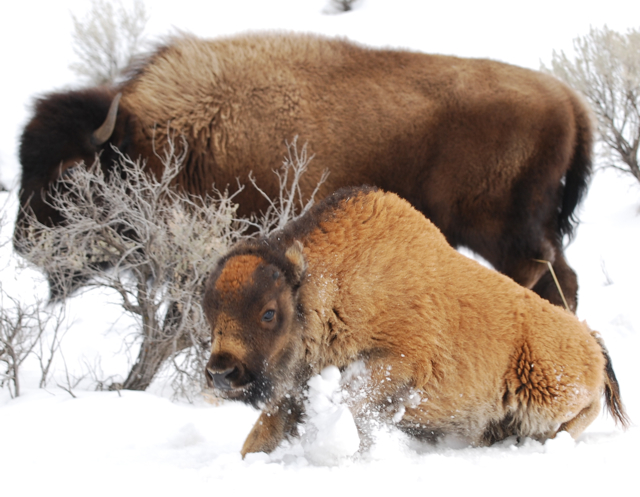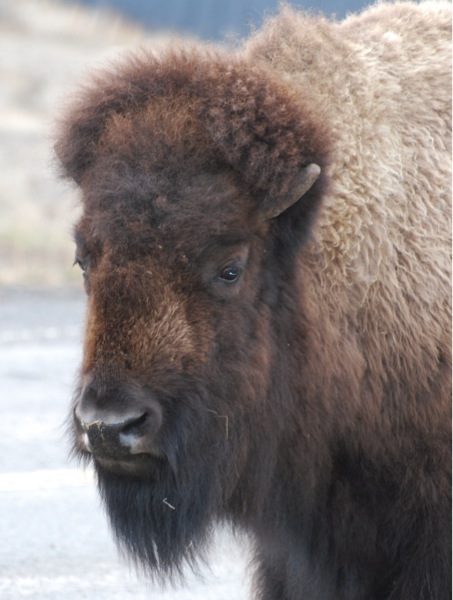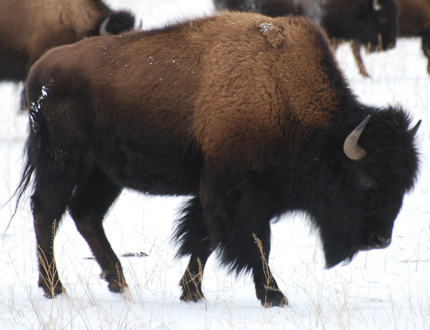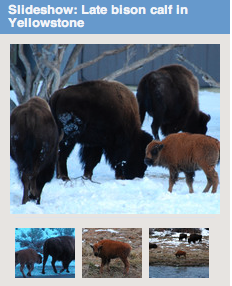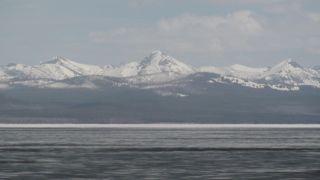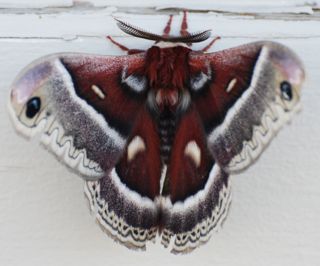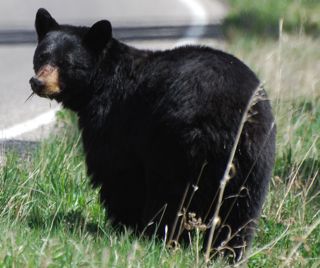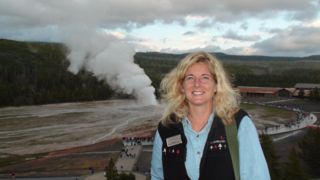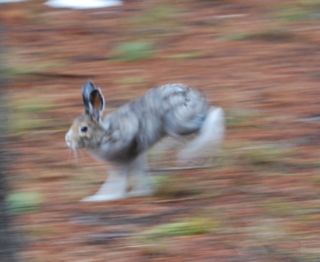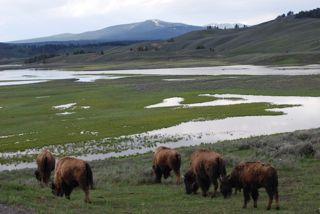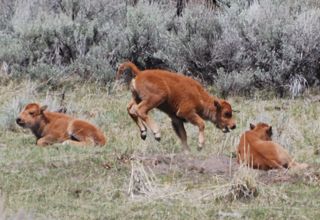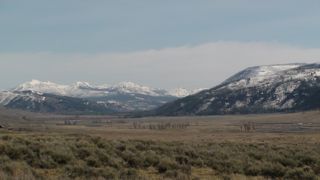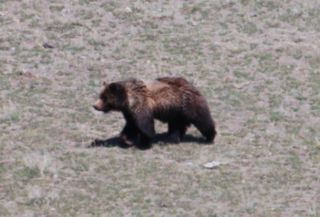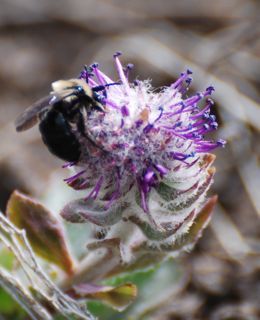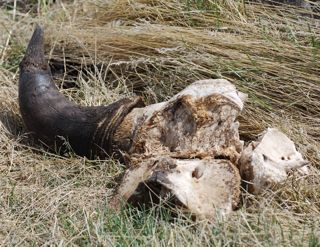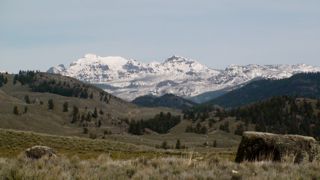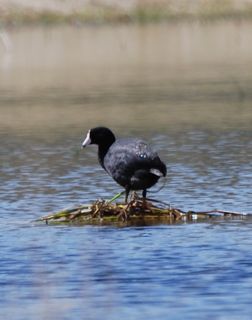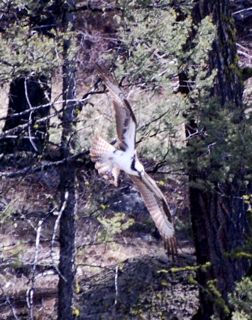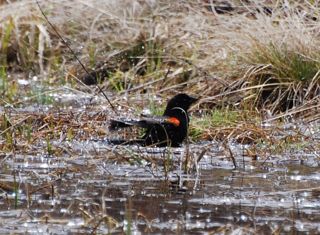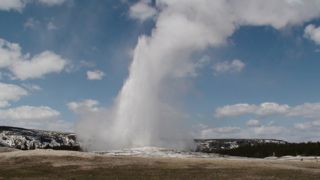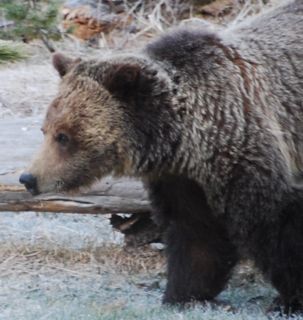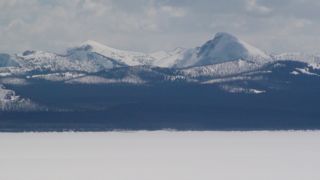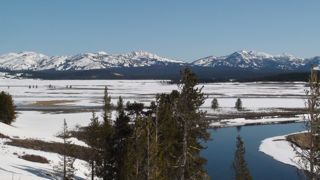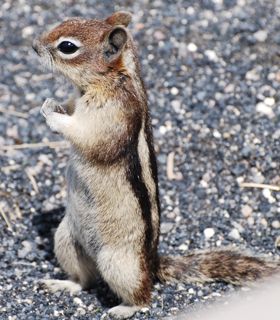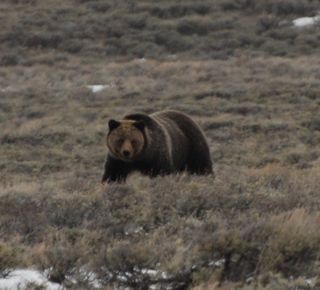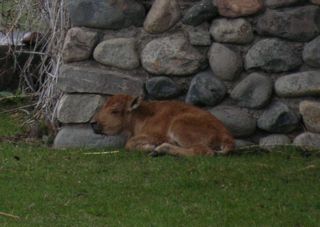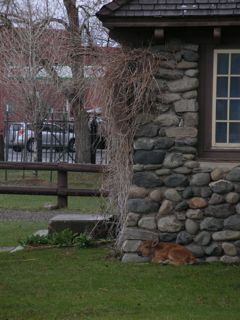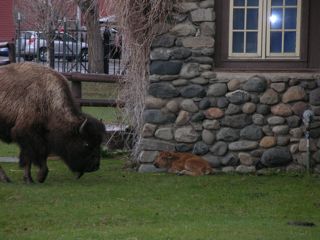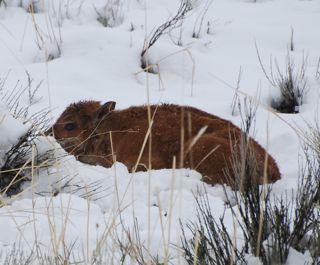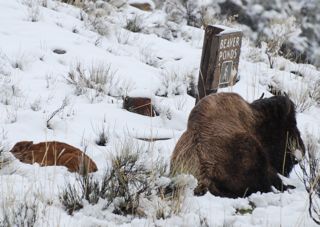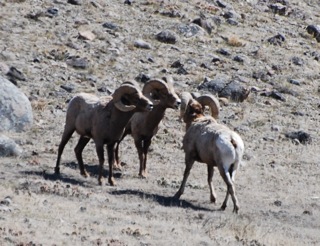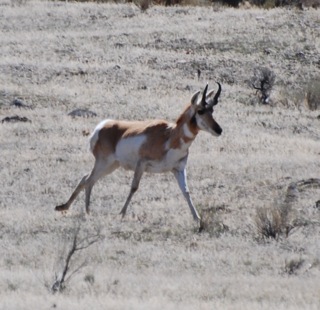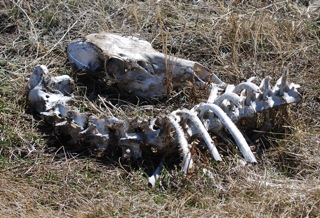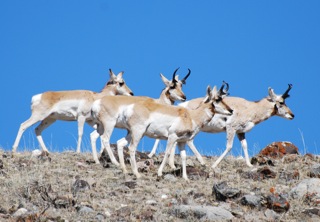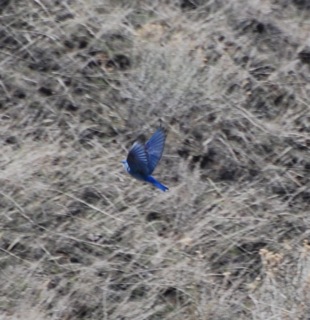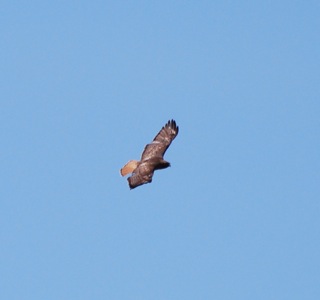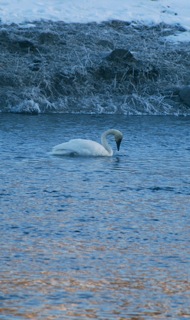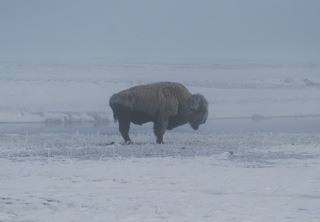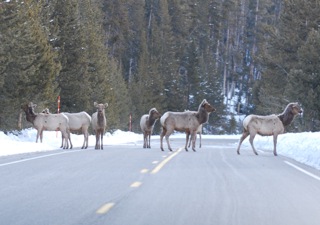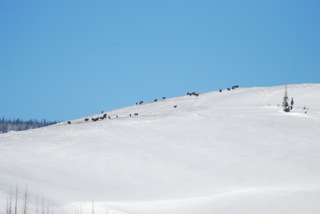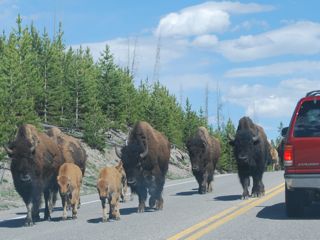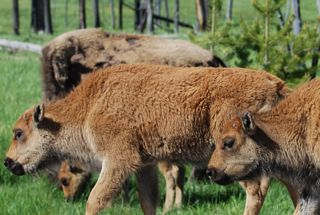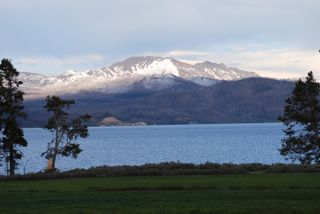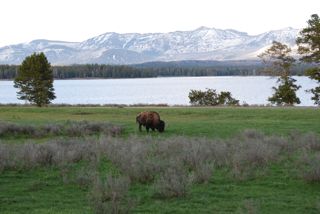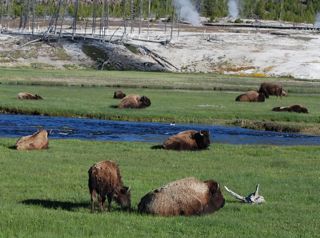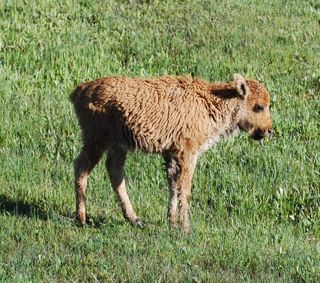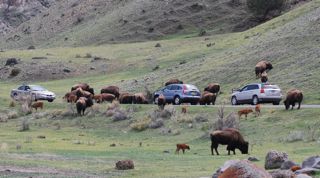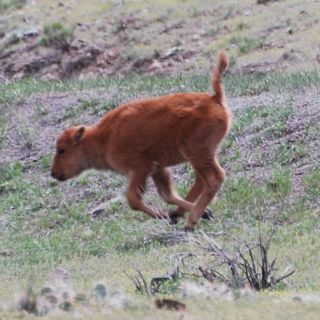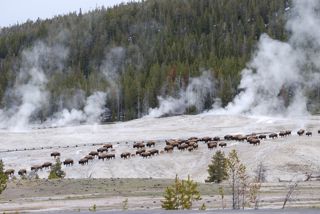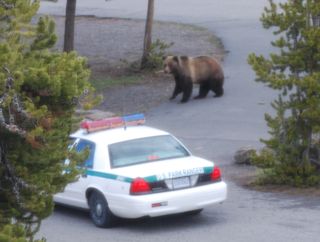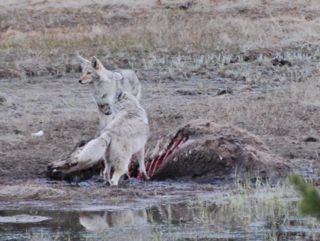 Does Zisa, the late season bison calf who beat all the odds, deserve to die?
Does Zisa, the late season bison calf who beat all the odds, deserve to die?
I recently wrote a lament for one bison that had been shot as part of a failed test to allow the animals to wander freely outside the park's north entrance. Seems I'll be kept busy writing eulogies for these magnificent animals this winter.
A district judge in Montana ruled today that the 500 Yellowstone bison being held outside the park's north entrance could be sent to slaughter as their removal would not threaten the long term survival of the herd. Even though the slaughter of the bison was "distasteful" (the judge's word) it was still an acceptable method in managing the animal.
It's been rumored that the little bison calf I've been reporting on, Zisa, is a part of the 500 bison on death row. This little guy, born late in the winter, beats all the odds in surviving only to be sent to slaughter because..because why? A bureaucratic plan for which I can find no justification. Bison are killed because of the fear of them transmitting brucellosis to cattle, but from the reports I have read, there has never been a single documented case of this transmittal and the more likely culprit is elk.
So why are we indiscriminately slaughtering 500 of Yellowstone's bison? Do these bison truly deserve to die? They left the park because it's a tough winter and they went in search of food. Government officials-please rethink your decision. These animals are part of the last continuous herd of wild bison in America. They are part of our heritage. They don't deserve to be condemned to death. They deserve our reverence and protection.
I stood and gazed at the captured bison this evening and simply cried. And I realized how powerless I felt that I could do nothing for them. Yellowstone--the world's first national park--is the best protected place on the planet. But what good is "America's Best Idea," if we can't keep the magnificent bison wild and free.
Please take action now to save Yellowstone's bison with one of these groups:

